Rotational Motion with Constant Angular Acceleration
Rotational Motion with Constant Angular Acceleration: Overview
This topic covers concepts, such as, Kinematics of Pure Rotational Motion, Constant Angular Velocity, Variable Angular Acceleration & Acceleration of Point in Pure Rotational Motion etc.
Important Questions on Rotational Motion with Constant Angular Acceleration
A thin rod of the length is suspended from one end and rotates with rotation per second, the rotational kinetic energy of rod will be?
A uniform solid sphere of mass and radius is projected along a rough horizontal surface with the initial velocity and angular velocity as shown in the figure. If the sphere finally comes to complete rest, then is equal to
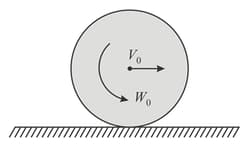
A wheel rotating with uniform angular acceleration covers rev in the first five seconds after the start. If the angular acceleration at the end of five seconds is , find the value of .
A rigid body under pure rotation is uniformly accelerated.The tangential acceleration of a particle of the body, the distance of the particle from the axis, and the angular acceleration of the body are related as . Thus:
The velocities are in ground frame and the cylinder is performing pure rolling on the plank, velocity of point 'A' would be
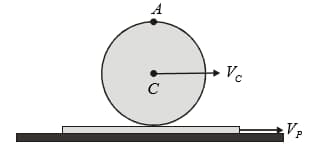
A uniform rod of length and mass is suspended from two inextensible string as shown in the figure. What will be the tension in the left string when right string snaps?
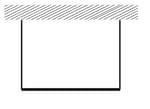
A mass is supported by a massless string wound around a uniform hollow cylinder of mass and radius . If the string does not slip on the cylinder, with what acceleration will the mass fall on release?
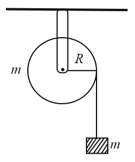
What will be the angular acceleration of a body if it is moving with a constant angular velocity in a circle?
A cord of negligible mass is wound round the rim oí a fly wheel of mass and radius A steady pull of is applied on the cord as shown in Fig. The flywheel is mounted on a horizontal axle with frictionless bearings. Compute the angular acceleration of the wheel.
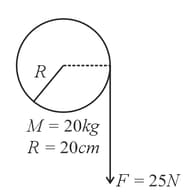
In rotational motion of a rigid body, all particles move with
A ring takes time in slipping down an inclined plane of length , whereas it takes time in rolling down the same plane. The ratio of and is -
A massless cord is wrapped around a pulley (disk). Mass of disk is and radius as shown in figure below. To one end of the cord, a block of mass is connected and to other end (a) a force of applied and in (b) a block of mass is connected. Let angular acceleration of the disk in (a) and (b) is and respectively, then which statement is true ?(cord is not slipping on the pulley)
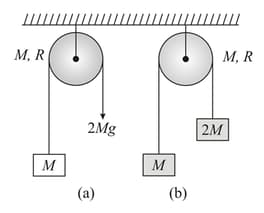
A ring of radius is rotating with an angular velocity and then it is placed on a rough horizontal surface in vertical plane. The coefficient of friction between the surface and the ring is . How much time it will take to reduce its angular speed half ?
A uniform rod of length and mass is suspended from two inextensible string as shown in the figure. What will be the tension in the left string when right string snaps?
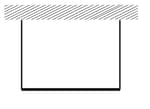
Find the initial angular acceleration of the rod just after when the string is cut.
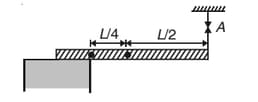
A drum of radius, carrying the load is rigidly attached to a pulley of radius, carrying the load , as shown. At time, the load moves with a velocity of (downward) and a constant acceleration of (downward). Over the time interval, determine:
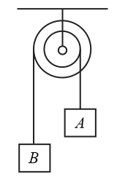
In the given arrangement, the rod is free to rotate about the hinge and it is in constant contact with the equilateral triangular block of base length . If the block is moving horizontally with a speed , then find the magnitude of the angular velocity of the rod (in ) at the instant when [Given that ]
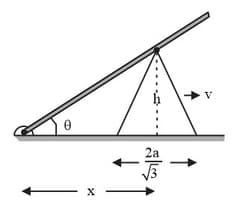
A constant power is supplied to a disc that can rotate freely about a fixed vertical axis. Angular velocity of the disc varies with the number of rotations made by the disc after starting from rest as . Hence is: (K is a constant)
A mass attached to the end of a flexible rope of diameter is raised vertically by winding the rope on a reel as shown. If the reel is turned uniformly at the rate of . What is the tension in rope. The inertia of rope may be neglected.
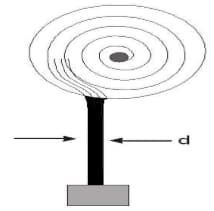
A particle at rest is to reach an angular velocity of in , with a constant angular acceleration. The total angle turned during this interval is
